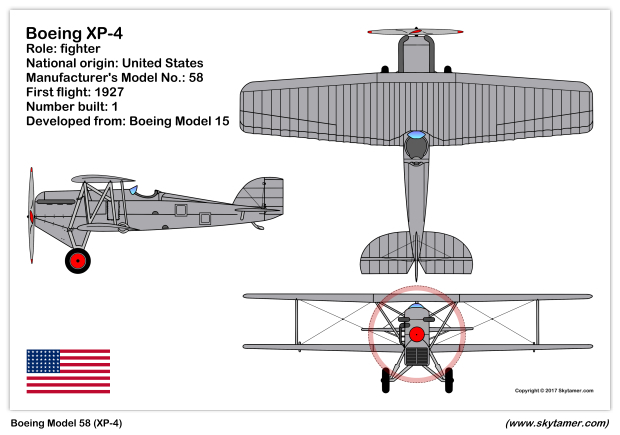
| ||||
|---|---|---|---|---|
 |
 |
 |
 |
 |



























| ||||
|---|---|---|---|---|
 |
 |
 |
 |
 |


























Boeing XP-4 (Boeing Model 58)
United States Army Air Corps Experimental Biplane Fighter

Archive Photos 2
The Boeing XP-4 was a prototype United States biplane fighter of the mid-1920s that was grounded permanently after just 4.5 hours of flight testing.
Development and Design 4
The Boeing Model 58 (XP-4) was the last PW-9 converted to a new experimental design through the addition of the turbo-supercharger to a Packard engine and the substitution of a new lower wing having the same dimensions as the original Boeing PW-9 upper wing in place of the regular 22 ft 5 in lower wing. There was no increase in the gap between the wings. The aerofoil section was changed from the original Göttingen 436 to a new Boeing 103A section. the armament was revised by installing one 0.30 caliber gun in each wing far enough out board to clear the propeller.
The Boeing XP-4 was 815 lb heavier than the Boeing PW-9 but had only 46 ft&su2; of additional wing area. It was severely handicapped in that it was merely an adaption of an existing aeroplane to a new configuration instead of having been designed for the best utilization of the new features. The Boeing XP-4 was delivered to Wright Field on July 27 1926, and was surveyed on May 1, 1928, since it was of no further use as a test aeroplane and was to differ from standard models for a service or advanced training squadron.
Boeing Model 58 (XP-4) Specifications 3,4
Type
Accommodation
Power Plant
Dimensions
Weights
Performance
Armament
Identifications
References